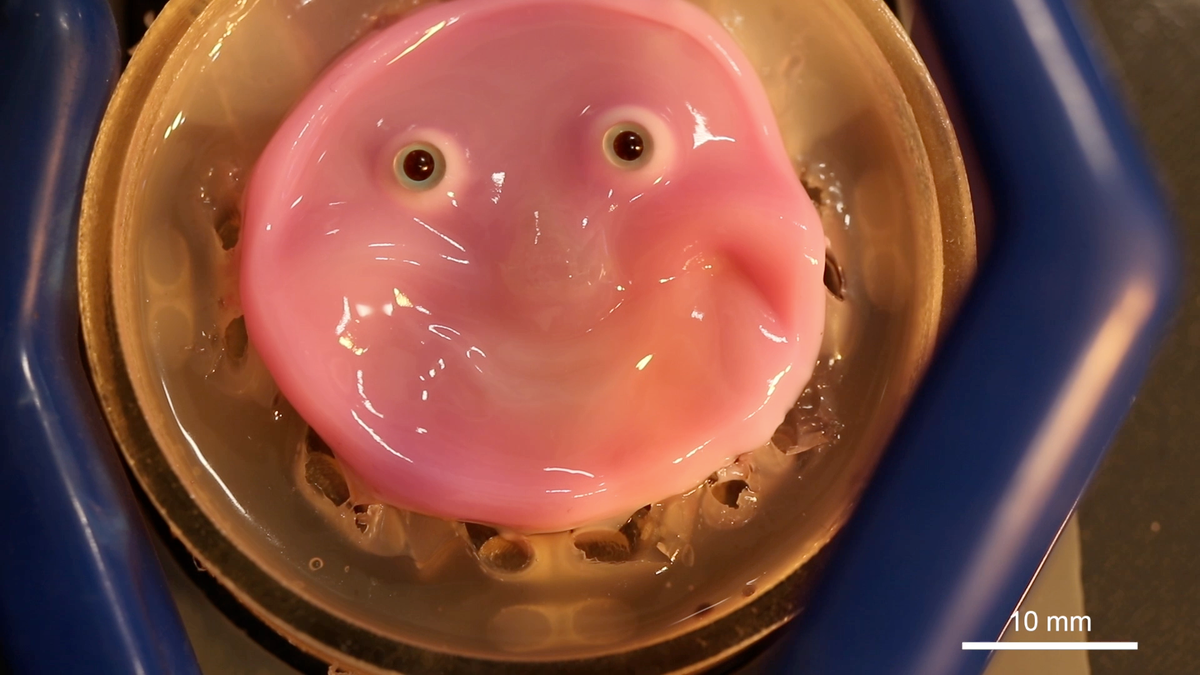World
Scientists Make ‘Living’ Skin for Smiling Robots in Horrifying Vision of the Future

Are you a fan of robots but just think they should have human-like skin and smile more? Well, you’re in luck, weirdo.
Scientists in Japan developed a technique for making life-like skin with human cells that could be used in future robots. It’s all part of their goal to “endow robots with the self-healing capabilities inherent in biological skin.”
Researchers from the University of Tokyo published a new paper in the journal Cell Reports Physical Science explaining how they did it on Tuesday. The paper shows how “perforation-type anchors,” inspired by skin ligaments, can be used to stretch realistic-looking skin over a humanoid robot’s face.
They’re hopeful that these new techniques will allow future robots to have self-healing properties, should their skin become damaged in some way. In fact, giving robots the ability to self-repair is the entire purpose behind their research, since traditionally robots are covered in silicone rubber. Rubber, as you can imagine, can’t self-heal in the way that human skin can.
“In unpredictable environments, minor scratches and damages that robot skin inevitably incurs can escalate into serious impairments if left unattended,” the scientists explain in the paper. “Therefore, the capacity for self-repair becomes a critical feature for humanoid robots.”
Tell us that’s not something you’d read just before the robot uprising.
The smiling robot skin is creepy enough, but the paper also demonstrates what happens when the “face” isn’t properly anchored.

“The primary advantage of using skin equivalent as a covering material for robots is its self-healing capability,” the researchers explain in the new paper. “Unlike other self-healing materials, which require heat or pressure to trigger adhesion at cut surfaces, skin equivalent can regenerate defects through cellular proliferation without any triggers.”
If you think it all sounds kind of horrifying, you’re not alone. As UK-based sci-fi author Nate Crowley tweeted, “Me, a science fiction author known for writing about robots and skin: please, for the love of God, do not give the robots skin.”
Another X user wrote, “I for one welcome our new skinsuited serial-killing overlords.”
Is the robot uprising just around the corner? Probably not, given the fact that anything approximating true self-awareness or a mind of one’s own is still the work of science fiction. But guys like Elon Musk insist AGI is just a couple years away, even as very smart people are very skeptical of this idea.
But don’t worry. If we do achieve AGI, scientists are working on giving the robots human skin to eventually allow self-healing as they slaughter humanity. And if this new research is any guide, at least they’ll be smiling when they do it.







:max_bytes(150000):strip_icc()/roundup-writereditor-loved-deals-tout-f5de51f85de145b2b1eb99cdb7b6cb84.jpg)


